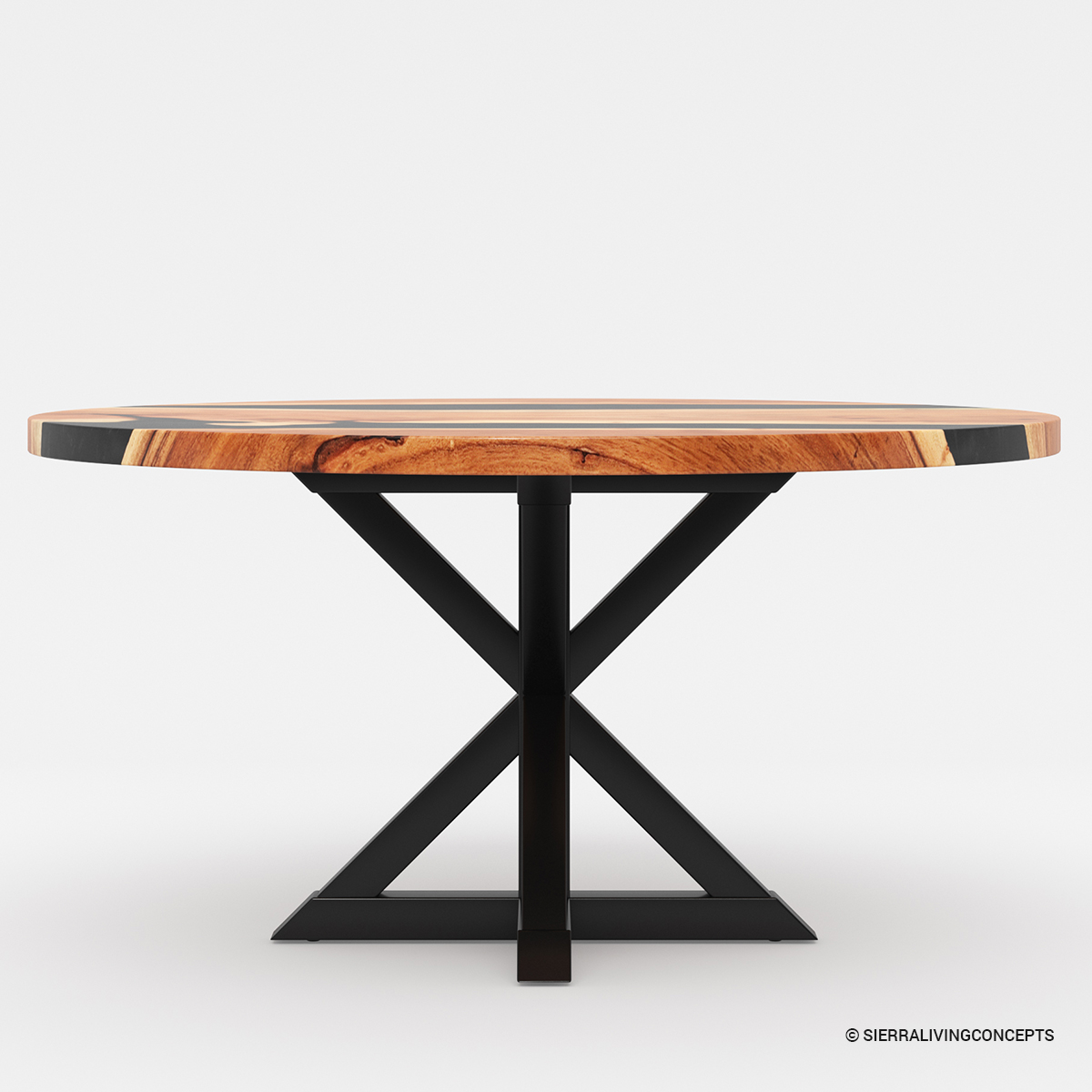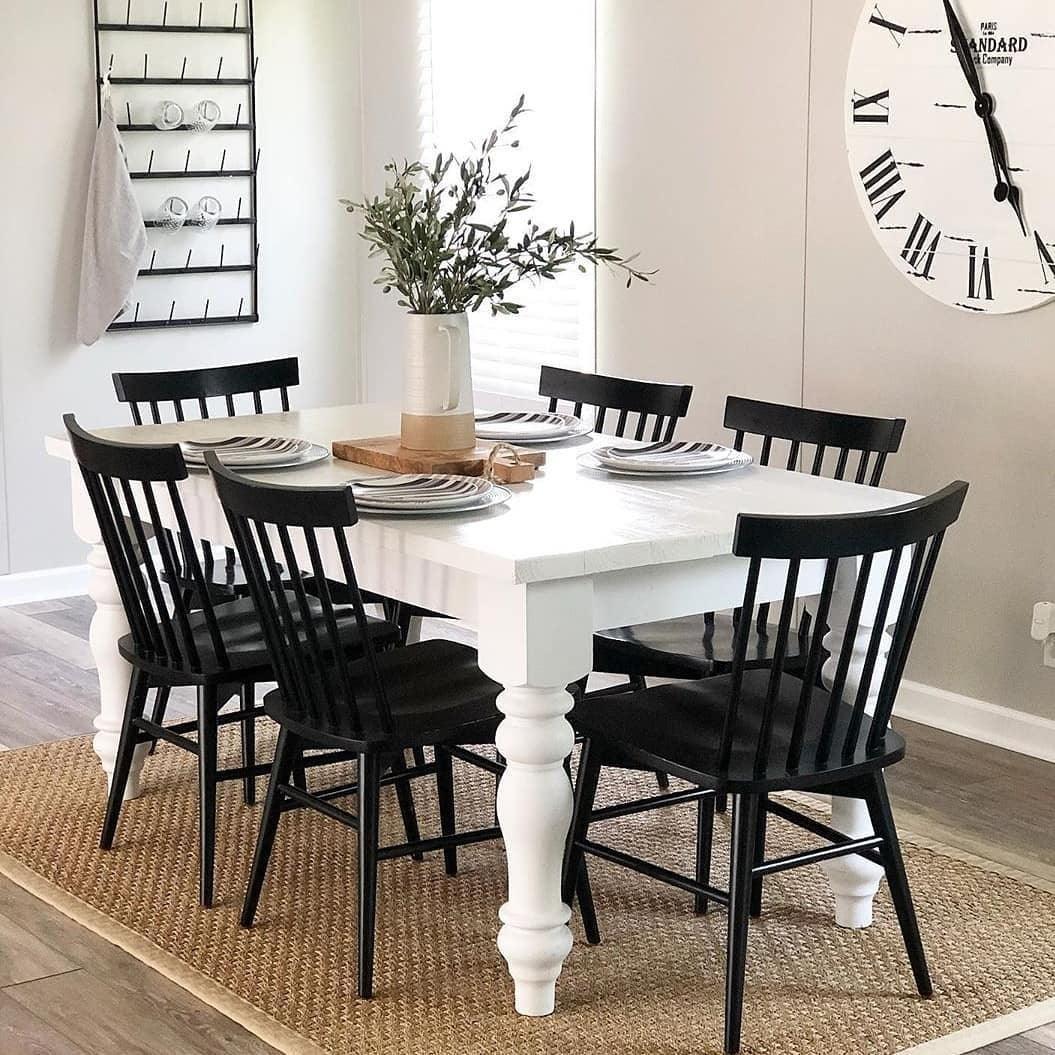Upgrade Your Furniture with Custom Dining Room Table Legs
From Typical to Modern: Find the Perfect Dining-room Table Legs for Your Design
The choice of eating area table legs plays a pivotal function in specifying the total personality of your space, connecting the space in between typical craftsmanship and contemporary appearances. While classic designs such as cabriole and turned legs evoke a sense of classic sophistication, contemporary styles like hairpin and geometric choices provide a chance for striking aesthetic passion. Reviewing the best balance in between these styles calls for a nuanced understanding of your existing design and individual preference. As you take into consideration these components, the inquiry continues to be: how can you seamlessly integrate these diverse leg styles to produce a harmonious dining experience?
Understanding Table Leg Styles
The variety of dining-room table leg designs can considerably influence both the aesthetic appeals and functionality of the room. Each leg design contributes unique aesthetic aspects and useful attributes, dealing with varied style preferences and use demands. Recognizing these styles is vital for selecting the appropriate table that straightens with your general interior decoration vision.
As an example, tapered legs offer a tidy, classic appearance that can enhance an area's sophistication, while stand bases supply security and take full advantage of legroom, making them suitable for smaller rooms. Hairpin legs, a characteristic of mid-century contemporary style, introduce an industrial panache, permitting an airy, open feel. Trestle legs stimulate rustic appeal, giving robust assistance and a feeling of timelessness.
Wooden legs can bring warmth and structure, whereas metal alternatives typically convey a smooth, modern ambiance. Inevitably, comprehending table leg styles is necessary for creating a cohesive dining area that shows individual style while ensuring practicality and convenience.
Standard Table Leg Options
When selecting dining area table legs, standard options frequently embody ageless elegance and workmanship. These styles mirror an abundant heritage and a dedication to quality, making them ideal for those that appreciate classic aesthetic appeals.
Among the most famous standard leg styles is the cabriole leg, defined by its stylish bent shape. This layout typically includes decorative makings and is most frequently discovered in Queen Anne and Chippendale furnishings. Another popular option is the transformed leg, which boasts a collection of smooth, rounded forms that offer a traditional look while maintaining stability.
Moreover, the straight leg, while easy, supplies a unadorned and strong structure that can mix seamlessly with a range of tabletop styles. For those attracted to ornate describing, claw-and-ball feet legs stimulate a sense of majesty and can function as a sensational focal factor in any kind of dining space.
Lastly, stand bases, although not purely legs, offer an alternate typical option that enables sufficient legroom and can be perfectly sculpted. Each of these traditional leg styles adds to the total setting of a dining-room, weding function with aesthetic charm.

Modern Table Leg Layouts
Modern table leg designs provide a varied variety of designs that emphasize clean lines and cutting-edge products. These styles commonly focus on functionality while acting as striking centerpieces within an eating room. Minimalist visual appeals prevail, with legs crafted from materials such as metal, glass, and engineered timber, which add to a modern and airy feeling.
One popular design is the hairpin leg, characterized by its slim, conical framework that offers security without overwhelming the table top (dining room table legs). This design is typically found in mid-century modern-day furniture and can easily complement different dining table shapes. An additional trend is the usage of geometric shapes, where legs might take on unbalanced or angular types, adding visual interest and a touch of creativity

Mixing Styles for Distinct Areas
Commonly, home owners seek to create distinct dining areas that reflect their individual style by mixing different style components. This technique permits for the unification of varied looks, resulting in an unified yet unique setting. Coupling a read more rustic wooden table see this website with streamlined, modern steel legs can develop an appealing comparison that raises the space's general allure.
Furthermore, integrating vintage table legs with contemporary table tops can stimulate a sense of background while maintaining a contemporary perceptiveness. Such combinations not only display individual taste yet also motivate creative thinking, allowing property owners to curate a room that feels both individual and inviting.
Shade plays a vital role in this mixing procedure; selecting table legs that match or contrast with the existing color pattern can enhance aesthetic passion. Whitewashed legs can soften the boldness of a dark table surface, producing a well balanced visual.
Tips for Choosing the Right Legs
Selecting the right table legs is necessary for attaining both functionality and aesthetic appeal in your dining space. Begin by considering the general design of your space. Typical setups take advantage of legs that include intricate carvings or turned designs, while contemporary spaces may ask for sleek, minimal designs.
Next, assess the elevation and stability of the legs. dining room table legs. Common table vary between 28 to 30 inches in elevation, so ensure the legs match this measurement for comfort. In addition, robust products, such as wood or metal, can enhance stability and longevity
Evaluate the leg shape as well-- options include straight, tapered, or pedestal layouts. Straight legs offer a traditional appearance, while conical legs can add a touch of beauty. Pedestal bases give ample legroom and are optimal for smaller sized rooms.
Conclusion
In summary, picking the ideal dining-room table legs calls for careful consideration of both standard and modern styles. Traditional alternatives such as cabriole and transformed legs offer timeless beauty, while modern-day styles like hairpin and geometric forms supply a contemporary touch. By integrating leg design, height, and material go to my blog with the overall décor, a cohesive and welcoming atmosphere can be achieved. Eventually, the chosen table legs ought to reflect the wanted aesthetic, enhancing the dining experience within the area.
The selection of eating space table leg designs can substantially affect both the appearances and capability of the space. Ultimately, recognizing table leg styles is important for creating a natural dining location that shows individual design while making sure functionality and convenience.One of the most legendary typical leg styles is the cabriole leg, identified by its stylish rounded form. Straight legs supply a timeless appearance, while tapered legs can include a touch of style.In summary, choosing the suitable dining room table legs requires cautious factor to consider of both contemporary and traditional styles.